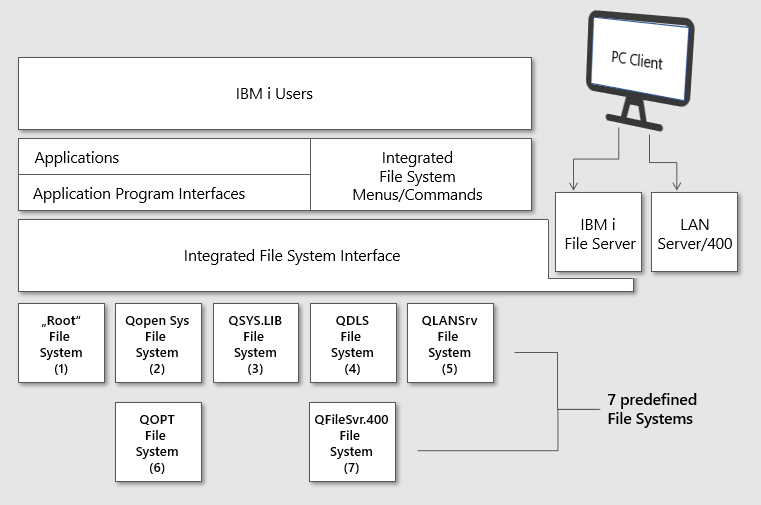Glossary
EDI projects require a wide variety of specialized knowledge. In our glossary, we provide answers to most of the terms you may encounter in your EDI project.
Integrated File System (IFS)
The Integrated File System (IFS) was introduced by IBM to allow IBM i users to run applications that do not follow the traditional library structure. A file system provides the support that allows applications to access specific segments of storage that are organised as logical units. These logical units are files, directories, libraries and objects.
IFS Facts in a Nutshell:
- Added to OS/400 V3R1 in 1994
- integrates IBM i with UNIX, Windows and other systems
- Directory structure similar to Linux or Windows
- contains seven predefined file systems in a single root directory and with individual restrictions and rules
- one of these structures is the traditional library structure
IFS contains 7 predefined file systems:
- Root (/)
- Open Systems (QOpenSys)
- Library (QSYS.LIB)
- Document Library Services (QDLS)
- LAN Server/400 (QLANSrv)
- Optical Support (QOPT)
- File server (QFileSvr.400)
Users and application programs can interact with each of the file systems through a common integrated file system (IFS) interface. This interface is optimised for stream input/output, as opposed to record input/output provided through the interfaces. The common integrated file system interface includes a set of user interfaces (commands, menus and displays) and application program interfaces (APIs).

